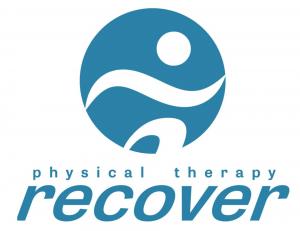How Physical Therapy Can Help Prevent Injuries
Injury prevention is a proactive approach that can significantly reduce the risk of musculoskeletal injuries”
SLIDELL, LOUISIANA, UNITED STATES, June 27, 2024 /EINPresswire.com/ -- Physical therapy is widely recognized for its role in rehabilitation and recovery, but its potential for injury prevention is equally significant. Chaise Bennett, owner of Recover Physical Therapy sheds light on how physical therapy can be an effective tool for preventing injuries in various populations.— Chaise Bennett
"Injury prevention is a proactive approach that can significantly reduce the risk of musculoskeletal injuries," says Chaise Bennett. "Through targeted exercises and education, physical therapy helps individuals understand their bodies and how to move safely."
The Role of Physical Therapy in Injury Prevention
Physical therapy focuses on improving movement, strength, and function. By addressing muscle imbalances, flexibility issues, and poor movement patterns, physical therapy can help prevent injuries before they occur. Here are several ways physical therapy contributes to injury prevention:
1. Strengthening Weak Muscles
One of the primary causes of injuries, particularly in athletes and active individuals, is muscle weakness. Weak muscles are more prone to strains and tears. Physical therapists design strength training programs that target weak areas, enhancing muscle strength and endurance. Strengthening muscles around vulnerable joints provides better support and reduces the likelihood of injury.
2. Improving Flexibility and Range of Motion
Tight muscles and limited joint mobility can lead to compensatory movements, which increase the risk of injury. Physical therapy includes stretching exercises and techniques that improve flexibility and range of motion. Enhanced flexibility allows for smoother and more efficient movements, reducing strain on muscles and joints.
3. Correcting Posture and Alignment
Poor posture and misalignment can place undue stress on various parts of the body, leading to pain and injury over time. Physical therapists assess posture and alignment, identifying any deviations that may contribute to injury risk. Through exercises and ergonomic advice, physical therapy helps correct these issues, promoting better posture and reducing the risk of injuries related to poor alignment.
4. Enhancing Balance and Coordination
Balance and coordination are crucial for preventing falls and related injuries, especially in older adults. Physical therapists use balance training exercises to improve stability and coordination. These exercises enhance proprioception, which is the body's ability to sense its position in space. Better balance and coordination help prevent falls and injuries associated with instability.
5. Educating on Proper Body Mechanics
Understanding how to move correctly during daily activities and sports is vital for injury prevention. Physical therapists educate individuals on proper body mechanics, teaching them how to lift, bend, and move safely. This education extends to sports-specific techniques, helping athletes perform their activities with minimal risk of injury.
6. Designing Personalized Exercise Programs
Each person's body is unique, and so are their injury risks. Physical therapists develop personalized exercise programs based on an individual's specific needs, weaknesses, and activities. These tailored programs address the unique factors that contribute to injury risk, providing a comprehensive approach to prevention.
7. Identifying Early Signs of Overuse and Stress
Physical therapists are trained to recognize early signs of overuse and stress in the body. By identifying these signs early, they can intervene before a minor issue becomes a major injury. This proactive approach involves adjusting activities, incorporating rest, and implementing preventive measures to avoid injury progression.
Impact of Physical Therapy on Different Populations
Athletes
Athletes are at a higher risk of injuries due to the physical demands of their sports. Physical therapy plays a crucial role in preventing sports injuries by improving strength, flexibility, and technique. Athletes benefit from sport-specific training that enhances their performance while minimizing the risk of injuries.
Older Adults
Falls are a leading cause of injury among older adults. Physical therapy helps prevent falls by improving balance, strength, and coordination. Exercises tailored to the needs of older adults enhance stability and reduce the risk of falls and related injuries.
Workers in Physically Demanding Jobs
Individuals with physically demanding jobs, such as construction workers and healthcare providers, are prone to work-related injuries. Physical therapy provides ergonomic training and exercises that reduce the risk of musculoskeletal injuries. By teaching proper body mechanics and strengthening vulnerable areas, physical therapy helps workers stay safe on the job.
Individuals with Chronic Conditions
Chronic conditions such as arthritis and osteoporosis increase the risk of injuries. Physical therapy helps manage these conditions by improving joint mobility, strength, and balance. Tailored exercise programs and education on safe movement practices help individuals with chronic conditions maintain their independence and reduce injury risk.
Conclusion
Injury prevention through physical therapy is a proactive approach that benefits a wide range of individuals, from athletes to older adults and workers in physically demanding jobs. By addressing muscle imbalances, improving flexibility, correcting posture, enhancing balance, and educating on proper body mechanics, physical therapy significantly reduces the risk of injuries. Chaise Bennett and the team at Recover Physical Therapy are dedicated to helping individuals stay injury-free and maintain their quality of life through personalized physical therapy programs.
Morgan Thomas
Rhino Digital, LLC
+1 504-875-5036
email us here
Visit us on social media:
Facebook
Legal Disclaimer:
EIN Presswire provides this news content "as is" without warranty of any kind. We do not accept any responsibility or liability for the accuracy, content, images, videos, licenses, completeness, legality, or reliability of the information contained in this article. If you have any complaints or copyright issues related to this article, kindly contact the author above.


